Getting started with CLion
Motivation
Once you eventually get tired of Windows (in my situation, the performance of OS somehow degraded after a couple of years working), you might find yourself in a dilemma. Either you simply trash your existing system to reinstall it from scratch, or probably it's the right time to pick up an alternative system to the rescue. The recent release of Ubuntu Linux seems just fine for starters: you will not have any trouble browsing the internet, watching videos, listening to music, etc. The only puzzle piece that I missed a lot was a decent IDE for C++ programming. Some years ago, I used Eclipse, then tried to start with the Qt Creator and had eventually fallen to the simplistic Visual Studio Code editor, which is not that bad by the way. I also remember the feeling when getting back from Eclipse to Visual Studio 2005. That time I got to know what catharsis is: you get a light and fast IDE (yeah, MS Visual Studio was like that) instead of an always-busy though open-source (does that excuse?) IDE.
So here is the question: which IDE is good on Linux? Without an aim to get into a holy war, I just want to share some thoughts on using the CLion IDE, which a commercial product (so, yeah, you have to pay for it). Take what's written below with a grain of salt:
- I am a beginner with CLion. The blog post is written right after I managed to burn down the first bug in one of my projects, so the IDE was in productive use. At the same time, to fully appreciate an IDE, you have to use it for months.
- I did use some other IDEs like Eclipse (10 years ago or so). I'm not a fan of Eclipse and based on my old experience, I try to avoid this IDE as much as possible. Probably this IDE is much better now compared to what it had been like when I did some Java programming. But the memories are full of pain.
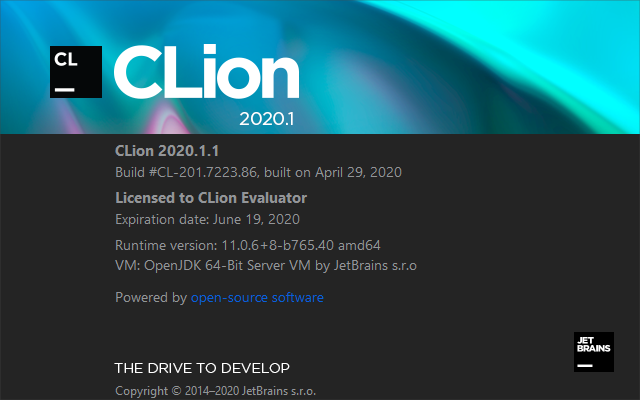
Getting started on Windows
CLion can easily be downloaded from the website of JetBrains. I started to test it on Windows, which is still my central working system for all the projects I'm doing (primarily because of Visual Studio). I was not aware of JetBrains and its products before. That's likely because I'm not on the cutting edge of technology. You do not demand much to feel comfortable with geometric modelling. Surrounding your favourite set of proven libs (like Qt, OpenCascade, VTK, etc.) with a good enough IDE, you will not feel like the rest of the world is moving somewhere ahead while you're stuck with your grandfather's tools. Either it is our field that is so conservative or it's rather me who is too lazy to keep up with all sorts of exciting technologies and languages emerging every year or so.
After several hours of googling, I started to appreciate the message of JetBrains to the market. They make tools for the software developers, and, since they are the developers by themselves, they "eat their dog food" to feel their products better and improve them based on their own experience. This is a brilliant practice, indeed. We have the same motto in our Analysis Situs product. Even the superb QA team will not give the level of confidence and satisfaction that you gain from your own experience of using your tool for solving your own problems. JetBrains is also known for its Kotlin programming language. A company ambitious enough to start inventing a new programming language deserves some attention for sure.

CLion is the IDE. It is by no means a compiler or a configuration system. The toolchain for building your projects can be configured right after you launch the IDE first time. I picked up the existing MSVC toolset (Visual Studio 2017 Professional in my case) as the "Environment" to let the IDE find all other things by itself. Besides automatic lookup for the C/C++ compiler and debugger, CLion also detects the CMake binaries (it has a CMake bundle inside). As I'm using CMake whenever I can, that was another pleasant surprise: so far, the configuration process had been pretty straightforward. I don't know, though, how easy it would be in the case when you do not migrate from an already deployed development environment (with all these Visual Studios and CMakes over there), but start from a blank sheet.
The GUI of CLion looks pretty attractive. It natively supports a dark and a white theme, where my favorite dark one looks polished enough (this theme is named "Darcula" in CLion). Although I would prefer a bit more contrast in the dark theme, it is still much better than something I was manually configuring in Visual Studio 2010 a long time ago. Not bad. The documentation available on the website is looking good as well.
The configuration process in CLion is tightly coupled with CMake. To switch between the build types (i.e., Release vs Debug), one has to go to the CMake props in the corresponding GUI panel of CLion. On CMake reconfiguration, the IDE will create a build directory (by default, this is a directory right within the source folder) named to reflect the build type (with "-debug" and "-release" suffix).
Instead of opening CMake GUI which was quite a familiar utility for me, in CLion I used to adjust all the CMake variables right in the CMakeCache.txt file. Not sure if that's the as-designed way of configuration, but given that the CMake output is always at hand, such a new technique does not seem impractical. Am I missing some more elaborated way of configuration though?
Problems
Running from IDE
In Visual Studio, we used to set the Environment property for debugging right away from the IDE.
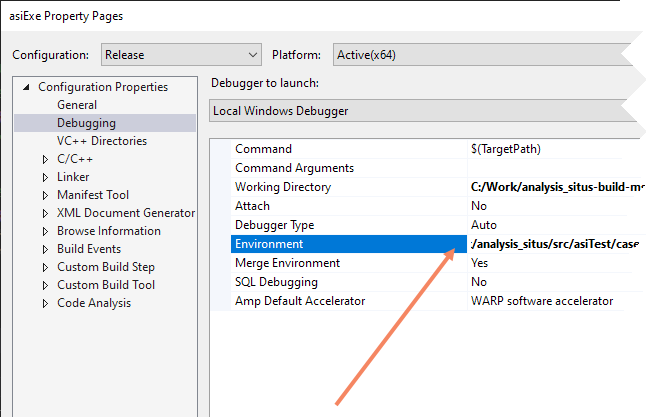
Visual Studio allows specifying the environment PATH variable to assure that all the runtime libraries are picked up when the executable runs. The missing environment was the first painful thing I faced in CLion. Even though your project builds successfully, it would not launch unless you have all the dependency libs ("so" for Linux and "dll" for Windows) in the runtime path. After spending a couple of hours on the internet, I discovered a lack of best practices to grab along the migration journey. There is plenty of youtube videos speaking about refactoring tools and smooth CMake integration where CLion seems to excel. But there are too few (if any) tutorials on how to set up the things for an existing (you can put "legacy" here) industrial project. Such projects are so different from the "Hello World" apps that I wonder how scalable CLion is. Will it work well for a project with millions of lines of code? Will these refactoring tools be that efficient for such a vast code base? After all, does that matter in terms of efficiency that CLion is a Java-based app? One link to check out is the CLion performance tuning tips.
Returning to the environment issue, one can fix that by going into "Edit Configurations..." panel and adding the variables manually there. Not so different from the familiar Visual Studio's way of doing that.
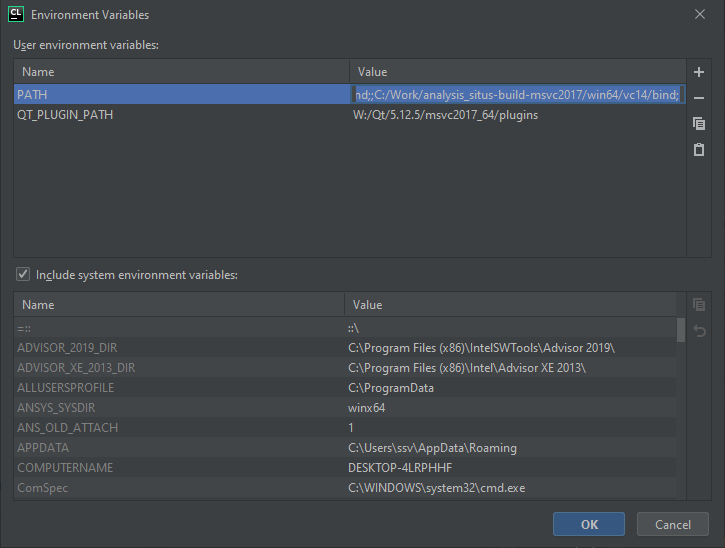
Two questions remain with such an approach:
- How to set up different runtime variables for debug and release? You should never mix both.
- How to avoid manual configuration of the environment? I.e., when a project is cloned from a repo first time, you'll unlikely want to spend a couple of unforgettable hours figuring out how to run it from within IDE.
Post-build testing
In Analysis Situs we use a post-build event to run unit testing right after the build process is done. In CLion, such a technique does not work anymore. The logic of running unit tests was configured in the following way in CMake:
# Post build event: run tests.
add_custom_command(
TARGET asiTest
POST_BUILD
COMMAND ${CMAKE_COMMAND} -E echo "Running unit tests..."
COMMAND IF 1==$<CONFIG:Release> ( call ${asiTest_BINARY_DIR}/setenv_rel.bat && $<TARGET_FILE:asiTest> )
COMMAND IF 1==$<CONFIG:RelWithDebInfo> ( call ${asiTest_BINARY_DIR}/setenv_rel.bat && $<TARGET_FILE:asiTest> )
COMMAND IF 1==$<CONFIG:Debug> ( call ${asiTest_BINARY_DIR}/setenv_deb.bat && $<TARGET_FILE:asiTest> )
)
It appears that such a trick is not only OS-specific (it was excluded from the Linux configuration), but also IDE-specific. There are integrations of CLion with some decent unit testing frameworks like Google Test, but I would not really want to refactor the unit testing system because of IDE. The easiest way to get unblocked is to temporarily disable unit tests. For that, in CMake, one can check if the CLION_IDE variable is defined, and, if so, do not include the corresponding targets into the project.
if (NOT $ENV{CLION_IDE})
set_property(TARGET MyUnitTestsExe PROPERTY FOLDER Executables)
endif()
Getting started on Linux
The installation on Linux is as simple as on Windows. After downloading the CLion tarball from the JetBrains' website, simply unpack it to the system directory:
sudo tar xzf CLion-2020.1.tar.gz -C /opt
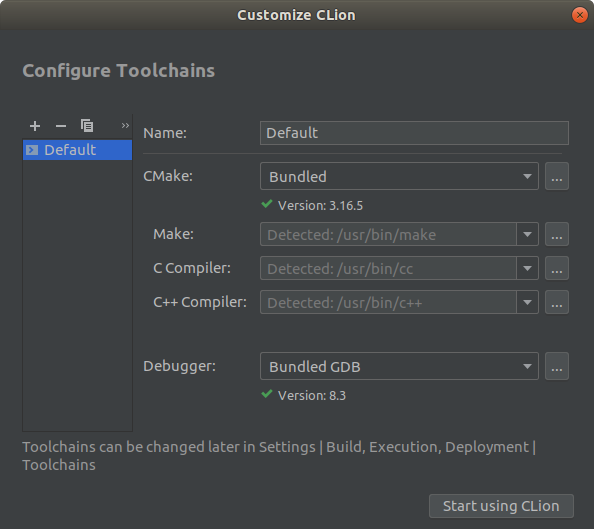
The process of importing the existing CMake project and compiling it was quite straightforward. As in the case of Windows, I had to manually change the CMakeCache.txt file to set up all configuration variables. After spending like ten minutes on that, I strengthened in the opinion that it would be much better to have a simplistic UI for CMake. Is there one? If yes, then how to enable it? But, Ok, even modifying the cache this way, you don't face any blocking issues.
Once the project is compiled, it's time to run and debug it. As personally, I have difficulties with debugging on Linux (yes, I hate debugging in the console), a simple ability of visual inspection at runtime, going into and over, setting breakpoints, etc. is a huge deal by itself for me. It does not really matter which IDE uncovers that creepy GDB into something eatable. What matters is how simple the configuration process is. So that was the moment of truth. As expected, I could not simply run the compiled application as the dependency libraries were neither in the working directory nor in the system path (there should have been Qt, VTK, OpenCascade, and many more). So I had to set the LD_LIBRARY_PATH variable in a custom way. Here is when I made the first mistake: you have to set your environment for executable, and not in the global settings. Before discovering that (I have to admit, that's quite logical, so it was entirely my fault), I tried to verify things by setting and printing the LD_LIBRARY_PATH in the terminal. Although the documentation says that there is a Terminal window, I could not enable it for a while. Accidentally, I found that you have to turn on a hardly perceptible checkbox for the corresponding (and pre-installed) plugin in the settings panel. This is how it looks like (notice a small checkbox on the right):
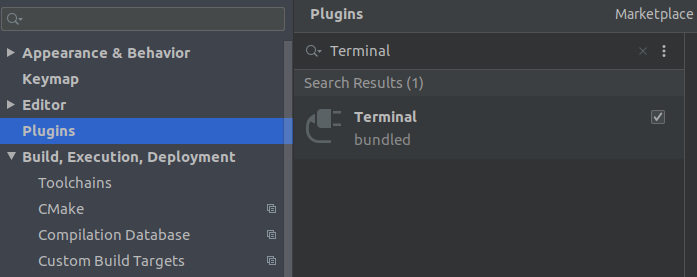
The terminal was enabled. It was of little help, though, as the environment variables I set there did not have any effect on running. Again, be careful to specify your custom environment: do this in the settings of your executable.
Conclusion
To fairly assess one or another IDE, you need to have been working with it for a while. Ideally, the projects you're doing should not be like self-contained student's exercises. Otherwise, you'll get no idea how good the IDE is when applied to real industrial programming. Some of the things I liked about CLion product are listed below:
- It is easy to install and configure. Probably, that's because I had almost all my projects in CMake already. That was a perfect fit for me, but I'm not sure if my experience scales.
- The GUI is friendly. Some little settings which I could not find out reading the online documentation or watching the overview videos, I had eventually sorted out by myself intuitively.
- The IDE looks powerful. It provides a lot of tools for working with the semantics of your code, including all sorts of finders, macro expansion utilities, refactoring recipes, and many more. Do not forget about static code analyzers and integrations with such popular tools as Valgrind. I have not evaluated all the options currently as such experimenting takes a lot of time.
- The guys who develop CLion have published many introductory videos, including insightful conference talks. Watch them out to learn the IDE better: it worth the time you spend on it.
Some questions remain, though. As anyone who has been caught by the first-class Visual Studio workbench, I've got difficulties trying to establish the familiar way of working in the new IDE. Many questions like the one with unit tests remain unresolved for me. Also, although looking nice in general, the UI of IDE is subjectively worse than in Microsoft products. I did not like the very contrasting Project tree in the Darcula scheme: it distracts a lot from the editor because of the too-bright font color. The layout of GUI controls also looks a bit messy to me (probably because of fonts again). Some panels (like the Terminal one) are hard to activate. The hotkeys are different from the familiar Visual Studio combinations, and I still have a hard time switching between both.
I also failed to find a CMake configuration panel to avoid editing CMakeCache.txt file manually (that could be Ok for open-source tools, but not for a commercial-grade IDE).
No doubts, after spending several months in the IDE, one gets used to all sorts of inconsistencies and finds some tricks to stay productive. Despite the fact the CLion is based on the good old IntelliJ IDEA, there's hope that the development team of CLion is not too restricted within the cage of the base framework. However, they are probably limited by Java more than by their in-house codes. I was really disappointed to see how much memory does JVM consume after several trial and error debugging attempts. You should keep an eye on your RAM resources and kill Java from time to time. That's too bad. If that goes like this, the next IDE I'll choose for C++ (in case CLion won't take off) will not be based on Java. Does anybody know some good cross-platform IDEs with CMake support and without any Java inside?
Well, the IDE is not expensive after all. For a small amount of money (that should not be a problem for any working programmer) you rent a tool of good quality, and the tool pays for itself.
On Medium.com.
Appendix
Here are some useful tips for CLioners:
| Run | Shift + F10 |
| Debug | Shift + F9 |
| Show whitespace, inlay hints, etc. | Ctrl+Shift+A, then type "show whitespaces"/"inlay hints"/etc. and change the corresponding setting. |
| Toggle header/source | F10 |
| Cmake install | To have like in Visual Studio Ctrl+Shift+B, press Ctrl+Alt+S, search for "Keymap / Main menu / Build / Install" and rebind the shortcut for the "Install" action. |
| Comment the selected block of text | Ctrl+Shift+/ |
List of keyboard shortcuts.
Update 1: after a year of using CLion
So here is the first update after a year passed. I would not make it very specific but just drop here some feelings I have right now.
- CLion is not a choice on Windows. On Windows, Visual Studio is simply better in almost all aspects by far. And, yes, I'm not happy to say that.
- CLion seems to pay a lot of attention to things I've never cared about, such as "smart" refactoring or (damn!) code generation. As an SDK developer, I never treat code as something to write and forget, so every single whitespace does matter to me. It is horrifying how people strive to "optimize" formatting and code generation without understanding that it makes the whole thing inevitably worse in long run. Really, all this refactoring and code generation business looks like fighting a problem that does not exist (to me).
- Maybe I'll sort out that tomorrow, but so far I haven't found a "Command Window" that I use a lot for debugging in Visual Studio IDE. And that is something really connected to productivity, as contrasted to all this code generation bullshit. The same applies to the "Watch" window where I could not put even simple mathematical expressions (like to convert from radians to degrees). But maybe I'm just missing some obvious things here.
- CLion would make a great deal of progress if they just use the same shortcuts as Visual Studio. Why not staying compatible with the most popular C++ IDE ever? That would lend the JetBrains' IDE as a feature-rich commercial-grade alternative to Visual Studio that does not require hours of training and breaking all old habits.
- Well, I understand it is Java, but JetBrains guys have to do something with memory. It is not fun having more than 4GB wasted on Java machine after a couple of days (hours?) running the IDE.
- It's pretty annoying to have global environment variables for both Debug and Release configurations. Switching from Debug to Release and vice versa I often have to reconfigure the environment, which wouldn't be the case if it was distributed across configurations just like in MS Visual Studio.
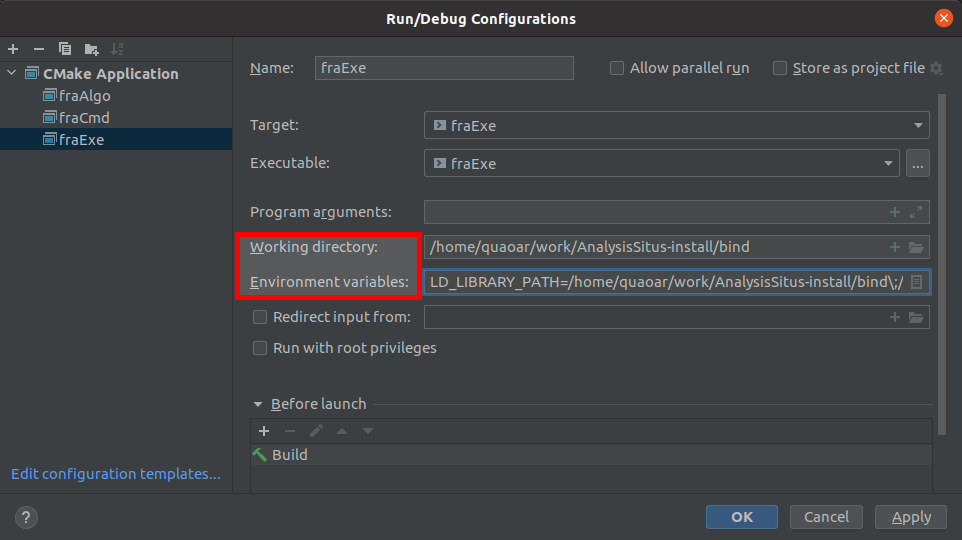
The conclusion so far is that neither Linux nor CLion are good in terms of productivity (whoops, I said that). Of course, this is strongly my personal perspective, and it might contradict other people's experiences. Also, I'm not giving up and, moreover, I completely got rid of Windows on my working laptop, so the journey continues to unfold.
Update 2: after quite some years
Well, if you happened to have a real performant laptop, then probably you can give CLion a try. Also, it is far better than Eclipse on Linux and I like how it's exposed towards CMake build system (simply because I use CMake a lot). At the same time, CLion did not go further for me than being just an "Okay" IDE when I have to ("have to", not "want to") work in Linux environment. Maybe it's me who is still misusing things, but I keep struggling with the IDE much more than I did with MS Visual Studio, and in terms of productivity it kinda sucks worse.
Want to discuss this? Jump in to our forum.